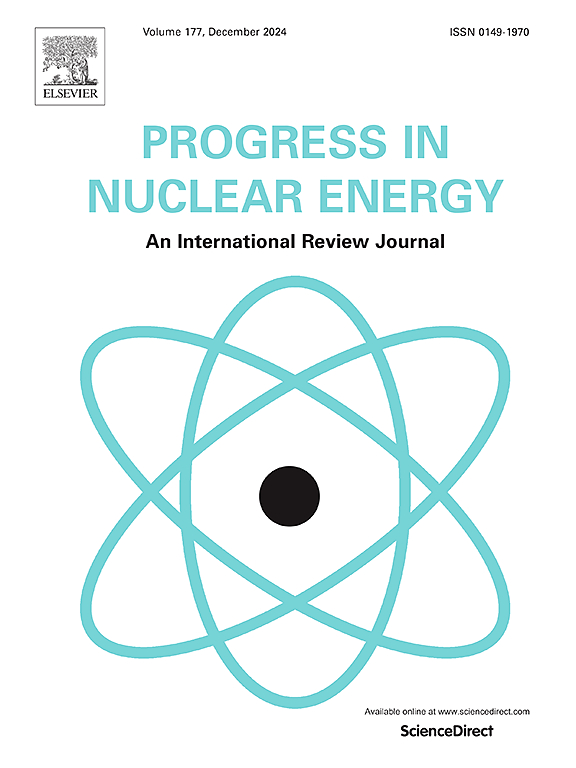On the conception of pseudo-cross sections for neutron escape in physical Monte Carlo simulations in finite domains
IF 3.3
3区 工程技术
Q1 NUCLEAR SCIENCE & TECHNOLOGY
引用次数: 0
Abstract
The physical approach of the Monte Carlo method in neutron transport enables, mainly due to its versatility, the construction of pseudo-cross sections for neutron escape and thus allows for quantifying escape pseudo-interactions in finite domains, such as in nuclear reactors. An intrinsic characteristic of these pseudo-cross sections is that they tend towards infinity at the surfaces of the studied domain and can, theoretically, simulate a surface by initially considering an infinite domain, simplifying and facilitating the treatment of neutron transport problems. In this work, this geometric characteristic is validated for stochastic approaches. For this purpose, the pseudo-cross section for neutron escape for a specific configuration, similar to the configurations of the early criticality studies in spherical medium, was obtained from a Monte Carlo simulation. Subsequently, a similar simulation was performed, however, considering an infinite domain and using only the pseudo-cross section to handle the boundaries of the spherical medium. Comparing results, i.e. the neutron spectral flux and the effective multiplication factor, a good agreement was observed between the usual approach, in which a boundary is defined in the simulation, and the proposed approach, in which an infinite domain is considered and only the escape cross section is used to treat the boundaries of the medium. The good results pave the way for similar studies considering more complex geometries and their feedback to deterministic approaches.
求助全文
约1分钟内获得全文
求助全文
来源期刊

Progress in Nuclear Energy
工程技术-核科学技术
CiteScore
5.30
自引率
14.80%
发文量
331
审稿时长
3.5 months
期刊介绍:
Progress in Nuclear Energy is an international review journal covering all aspects of nuclear science and engineering. In keeping with the maturity of nuclear power, articles on safety, siting and environmental problems are encouraged, as are those associated with economics and fuel management. However, basic physics and engineering will remain an important aspect of the editorial policy. Articles published are either of a review nature or present new material in more depth. They are aimed at researchers and technically-oriented managers working in the nuclear energy field.
Please note the following:
1) PNE seeks high quality research papers which are medium to long in length. Short research papers should be submitted to the journal Annals in Nuclear Energy.
2) PNE reserves the right to reject papers which are based solely on routine application of computer codes used to produce reactor designs or explain existing reactor phenomena. Such papers, although worthy, are best left as laboratory reports whereas Progress in Nuclear Energy seeks papers of originality, which are archival in nature, in the fields of mathematical and experimental nuclear technology, including fission, fusion (blanket physics, radiation damage), safety, materials aspects, economics, etc.
3) Review papers, which may occasionally be invited, are particularly sought by the journal in these fields.
 求助内容:
求助内容: 应助结果提醒方式:
应助结果提醒方式:


